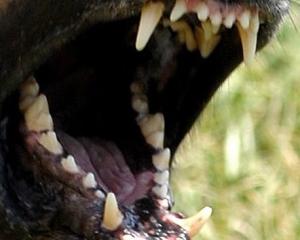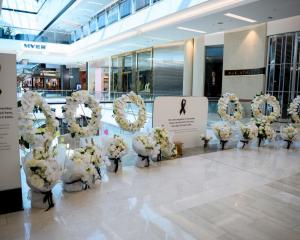The Dutch Defence Ministry said conditions were treacherous when the Corvus J container ship and the Baltic Ace collided, sending 1400 new cars, mostly Mitsubishis from Japan and Thailand, to the seabed on Wednesday evening (local time).
But Panagiootis Kakoliris, operations manager at Stamco Ship Management Co., Ltd. which managed the Baltic Ace, told Reuters sea conditions were normal when the 23,500-tonne ship was lost.
The cause of the crash, which killed two Poles, two Filipinos and a Ukrainian, was unclear.
Kakoliris said technical failure was extremely unlikely because the ship was just five years old, in very good condition and had passed a safety inspection in August.
"We had a very violent collision which was the reason for the quick sinking of the vessel," Kakoliris said. "It was most probably hit in the side and that's why water entered in huge quantities with this result.
"You cannot control some things. This happened in good weather, normal weather. There was good visibility, so I feel most probably there was a human error," Kakoliris said. He did not say who he thought was responsible for the collision.
It was not known if the Polish captain, who was released from a hospital, had spoken to authorities about the collision 50 nautical miles from Rotterdam, Europe's largest port.
The owners of the Corvus J, German shipping firm Juengerhans, did not discuss responsibility for the collision in a statement published on its website. It said it would "offer its full cooperation into the investigation."
"The only thing we know from the crew is that there was a wind force of 6-7 out on sea," a company spokesman said, adding that was not unusual for the time of year.
The car carrier, built in 2007, sank in 15 minutes. The wreck is now at a depth of about 25-30 metres near the Noord Hinder shipping route, one of the busiest in the world.
NO DUTCH JURISDICTION
Dutch authorities said they would not launch a criminal investigation because the accident took place outside their territorial waters and neither of the ships was Dutch.
Cyprus and the Bahamas could still ask the Netherlands to investigate through bilateral requests.
The Dutch coastguard said cold, snow, three-meter-high waves and gale-force winds meant there was only a slim chance of finding alive any of the missing crew, who included a Bulgarian.
The coastguard said 13 of the 24 crew were rescued on Wednesday after survivors scrambled into life rafts and were winched to safety by helicopters, or picked up by ships.
Karen Gelijns, a spokeswoman for the Dutch Defence Ministry, said: "It was a wild night, there were force 6 winds, very rough seas, and it was snowing." Gelijns said the ship sank so quickly "nobody would have had time to put on protective clothing".
SHIPPING TRAFFIC UNAFFECTED
The Baltic Ace was en route from Zeebrugge in Belgium to Kotka in Finland, while the Corvus J was going from Grangemouth in Scotland to Antwerp, Belgium.
Officials said the Corvus J was damaged and resumed its route to Belgium. No delays were caused to shipping traffic in Dutch waters, where about 250,000 vessels pass each year.
"It is very busy route," said Edwin de Feijter, a spokesman for Rijkswaterstaat, a directorate whose responsibilities include the shipping lanes in the Dutch part of the North Sea, adding that the ship sank near rather than in the route.
The Baltic Ace was managed by Stamco Ship Management Co. Ltd., based in Piraeus, Greece, and owned by Isle of Man-based Ray Car Carriers. It was insured for between $50 million and $60 million, two sources said.
Insurance Insider said the loss caps a difficult year for the marine insurance sector including $1.16 billion in claims from the cruise ship Costa Concordia and $2 billion to $3 billion in losses from Hurricane Sandy.












